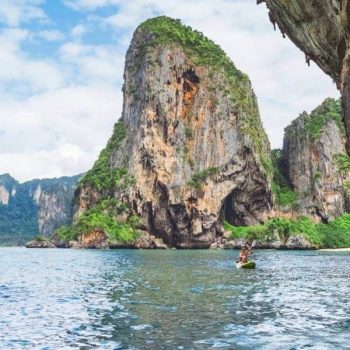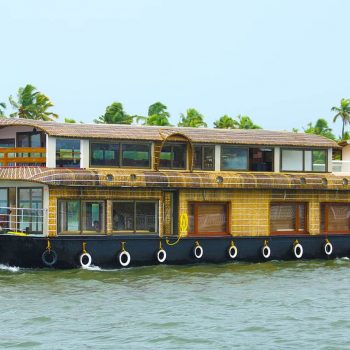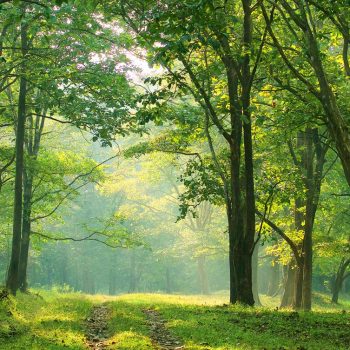Most of the tourist itineraries and Package Tours have restricted the beauty of Kerala in its serene beaches, mesmerizing hill stations, mouth-watering sea-food, and mind-blowing Kerala architecture. Beyond these attractions, the Fortresses of Kerala offers you a chance to time travel back to the grandeur bygone eras of kingdoms and empires. The fortresses speak of the history, culture, and the soul of the land it stands.
Despite the wild vines climbing its walls and birds nestling, the forts of Kerala have withstood the sands of time in all its former glory and magnificence.
Let us have a look into some of the famous Forts in Kerala.
St Angelo Fort
St Angelo Fort in Kannur was built by the first Portuguese Viceroy of India in 1505. The fort was built overlooking the fishing harbor of Mappila Bay. The Fort is surrounded by sea on its three sides. The fort landed in the hands of the British in the late 18th century and was made into a garrison.
The fort is also called as the Kannur fort. The panoramic view of the Arabian Sea from the fort is mesmerizing. The fort is constructed with laterite stone and is under the protection of the Archaeological Survey of India.
Palakkad Fort
Palakkad Fort is the best-preserved forts in south India located in the heart of Palakkad city. The fort was built by Hyder Ali Khan in 1766 when he was the ruler of the Mysore kingdom. The fort is also called as Tipu's Fort. The granite structure is built over a preexisting fortification. The fort was under the control of Hyder Ali and British from time to time. Now the fort is home to government offices, a sub-jail, and a small pray area.
Pallippuram Fort
Pallipuram Fort located in Ernakulam is the oldest existing European forts in India. The fort was built by Portuguese in 1503. The fort is made of wood, lime, and laterite. The fort has a hexagonal structure and is located in the northernmost part of the Vypin islands. The fort is under renovation. The fort is also called as Ayikotta or Alikotta locally.
Chandragiri Fort
Chandragiri Fort is a monumental site in Kasargod. The 17th century Fort is built atop a hill by Shivappa Nayaka of Keladi. It was built after the fall of the Vijayanagara Empire. The enchanting view of the Payaswini river merging with the Arabian Sea from the fort is a must-see. The Bekal Fort was also constructed by Nayaka and the fort is under the protection of ASI.
Hosdurg Fort
Hosdurg Fort is located in Kasaragod built by Somashekara Nayak. The grandiose structure has a round bastion. The ruins of the fort can be found near the ashram of Swami Nithyananda where you will find 45 caves. This Fort is otherwise called Kanhangad Fort. To the south-west of the fort is a temple that was also built by the Nayaks. The temple, dedicated to Shiva, is named the Poonkavanam Karpooreswara Temple.
Thalassery Fort
British East India company was lured in by the abundance of pepper and cardamom in the coastal town Thalassery which they pronounced as Thellicherry. They asserted a stronghold on the Malabar coast by establishing a European Trading center. They fortified their property by building the Thalassery fort in 1708. The fort is built with gigantic laterite blocks, the architecture stands with imposing demeanor with high walls, secret tunnels to the sea, strong flanking base stations and amazing carvings on the doors. A lighthouse stands among the ruins giving you the picturesque view of the surroundings.
St Thomas Fort
St Thomas Fort is located in the beach town of Thangassery near Kollam. Thangassery town is believed to have trade relations with China since the first millennium and later became the strong trade centers of Portuguese, Dutch, the British East India Company, etc. St Thomas Fort is ruined and only some parts of the fort can be seen to date.
Fort Emmanuel
The famous Fort Kochi town derives its name from the Fort Emmanuel built by the Portuguese in 1503 after the royal family granted permission. St Francis church built inside the fort. The fort has been under the rule of the Dutch in 1663 and later taken over by the British in the 18th century. Only a few remains of the fort can be seen on the shores of Fort Kochi today. It was one of the first forts built by Portuguese in Asia.
Kottappuram Fort
Kottappuram Fort was built by the Portuguese in 1523 and christened it ‘Fortaleza de São Tomé'. The fort is located in Kodungallur. The fort came to be called by many other names like Kodungallur fort, Kodungallur Fort, etc. Over a century later after it was built, the Dutch took custody of the fort which was later taken over by Tipu Sultan. He destroyed the fort and only a few remnants of the fort can be seen now.
Anchuthengu Fort
Anchuthengu fort is located in Varkala. The name implies- Five coconut trees. The fort is also known as Anjengo fort built by the Britsh East India Company in 1696 after seeking permission from the Queen of Attingal.
The fort encloses a large expanse of land making it the perfect spot for the permanent post of British in Malabar. In the beginning, it was used as a signaling station for ships. A lighthouse nearby gives a bird's eye view of the fort as well as the sea.
Nedumkotta
The majestic Nedumkotta also is known as Travancore lines located in Thrissur was built by the King of Travancore, Dharma Raja Karthika Thirunal. The fort was built as a defense against the frequent threats and attacks from Hyder Ali Khan, Tipu Sultan, and the Zamorins of Kozhikode. The fort was built using mud & clay. The structure was reinforced with laterite, stone, and granite at strategic places. The defense line is 48 km long running from Krishna Kotta on the west coast to Anamalai Hills of Western Ghats. The defense line was compared to the Great Wall Of China in the olden days. Sadly only the ruins of the defense line remain as a testimony of the brilliant engineering and historic battles fought.
William Fort
William Fort also known as Chettuva Kotta was built by the Dutch East India Company in Thrissur in 1714. The fort was later occupied by Zamorin of Kozhikode and Tipu Sultan, who named the fort after him. Tipu Sultan known for his destructive nature destroyed the fort partially. The dilapidated fort is now under the care of ASI.
The forts of Kerala have stories of battles fought. They are the standing time capsules of history that radiate the bravery of the soldiers who fought battles for the land. The forts in Kerala give you a chance to glimpse into the proud heritage and history. The forts in Kerala are must-visit Kerala sightseeing Package Tour s. Funday holidays offer you the best Package Tour s.






No comments
No comments were posted yet.